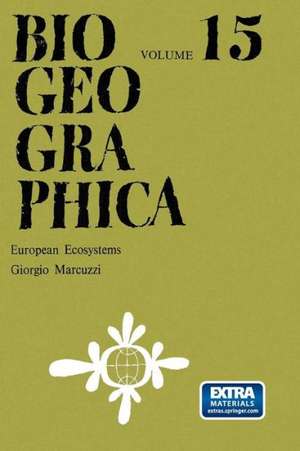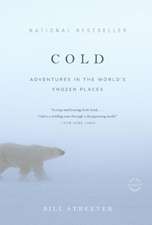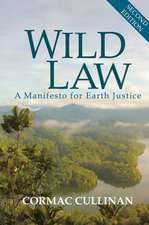European Ecosystems: Biogeographica, cartea 15
Autor G. Marcuzzien Limba Engleză Paperback – 23 aug 2014
Din seria Biogeographica
-
 Preț: 387.96 lei
Preț: 387.96 lei -
 Preț: 381.00 lei
Preț: 381.00 lei -
 Preț: 416.92 lei
Preț: 416.92 lei -
 Preț: 383.12 lei
Preț: 383.12 lei - 20%
 Preț: 561.98 lei
Preț: 561.98 lei -
 Preț: 336.90 lei
Preț: 336.90 lei -
 Preț: 363.07 lei
Preț: 363.07 lei -
 Preț: 339.80 lei
Preț: 339.80 lei -
 Preț: 364.37 lei
Preț: 364.37 lei - 18%
 Preț: 1223.74 lei
Preț: 1223.74 lei - 18%
 Preț: 1223.43 lei
Preț: 1223.43 lei -
 Preț: 420.58 lei
Preț: 420.58 lei - 18%
 Preț: 1223.43 lei
Preț: 1223.43 lei -
 Preț: 345.25 lei
Preț: 345.25 lei - 20%
 Preț: 558.87 lei
Preț: 558.87 lei - 18%
 Preț: 1223.55 lei
Preț: 1223.55 lei - 18%
 Preț: 944.06 lei
Preț: 944.06 lei - 18%
 Preț: 945.92 lei
Preț: 945.92 lei
Preț: 664.93 lei
Preț vechi: 782.27 lei
-15% Nou
Puncte Express: 997
Preț estimativ în valută:
127.23€ • 133.20$ • 105.28£
127.23€ • 133.20$ • 105.28£
Carte tipărită la comandă
Livrare economică 07-21 aprilie
Preluare comenzi: 021 569.72.76
Specificații
ISBN-13: 9789400996182
ISBN-10: 9400996187
Pagini: 800
Ilustrații: X, 779 p. 488 illus. With online files/update.
Dimensiuni: 155 x 235 x 48 mm
Greutate: 1.1 kg
Ediția:Softcover reprint of the original 1st ed. 1979
Editura: SPRINGER NETHERLANDS
Colecția Springer
Seria Biogeographica
Locul publicării:Dordrecht, Netherlands
ISBN-10: 9400996187
Pagini: 800
Ilustrații: X, 779 p. 488 illus. With online files/update.
Dimensiuni: 155 x 235 x 48 mm
Greutate: 1.1 kg
Ediția:Softcover reprint of the original 1st ed. 1979
Editura: SPRINGER NETHERLANDS
Colecția Springer
Seria Biogeographica
Locul publicării:Dordrecht, Netherlands
Public țintă
ResearchCuprins
Sclerophyllous Forest.- A. General part.- B. Special part.- The Deciduous Forest.- General characteristics.- Vegetation.- The effects of man on European deciduous forest.- The fauna of deciduous forests.- The invertebrates.- Harmful invertebrates of deciduous forests.- Dynamism in ecology of deciduous forests.- An example of conservation in the deciduous forests.- Examples of European deciduous forests.- The Taiga.- General features.- The animal of the taiga.- The problem of conservation.- The Tundra.- The tundra in the past.- The influence of human agency upon the tundra.- The vegetation.- The fauna.- The problem of conservation in tundra ecosystems.- Applied ecology in the tundra ecosystem.- The Steppe.- The impact of man on the steppes.- The vegetation.- The fauna.- The invertebrates.- Productivity.- The Heaths.- Human impact upon heaths.- The vegetation.- Ecological implications of heath plants.- Origin of the heaths.- The heath animals.- Elements of biogeographical interest within the heath fauna.- Conservation problems in heathland.- The Montane Environment.- The soil.- The impact of man upon the mountain environment.- The vegetation.- Animal life.- Protection in the montane environment.- Humid or Alluvial Environments.- General characteristics.- Swamps.- Moors.- The shores of lakes.- The banks of rivers.- Life on the sea-shore.- The human impact upon humid environments.- Conservation problems in humid environments.- Fresh Water Environments.- General characteristics.- The sediments.- Vegetation.- The impact of man on freshwater environments.- Standing waters.- Brackish waters.- Saltern.- Running waters.- Fishing and fish culture in continental waters.- Pollution of inland waters.- The Environment of Human Settlement.- Artificial Ecosystems: The Cultivated Areas.-Addenda.- The sclerophyllous forest.- The deciduous forest.- The steppe.- The montane environment.- Humid or alluvial environments.- Fresh water environments.- The environment of human settlement.- Artificial ecosystems: the cultivated areas.














